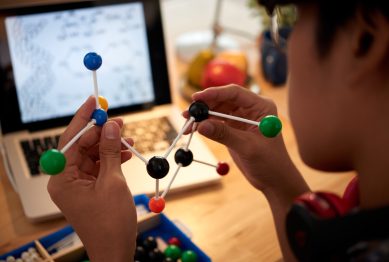We live in a world of overwhelming complexity—news cycles shift by the hour, social media streams never stop, and businesses face volatile markets, disrupted supply chains, and unpredictable customer behaviour. In this constant churn, how to spot patterns in chaos has become both a survival skill and a strategic advantage.
Today, a new generation of tools—driven by artificial intelligence (AI) and machine learning—is helping humans detect patterns that would otherwise be invisible. From financial markets to climate forecasting and healthcare diagnostics, these technologies are finding order in apparent disorder. But how do they do it, and what does it mean for decision-makers?

1. Why Pattern Recognition in Chaos Matters More Than Ever
Chaos doesn’t always mean complete disorder—it often hides systems, trends, or repeating motifs beneath surface-level randomness. Spotting patterns early gives businesses and researchers the chance to act before competitors, avoid risk, and make more informed decisions.
For example:
- In finance, spotting anomalous trading behaviour can prevent major losses or signal a market shift.
- In epidemiology, recognising early symptoms or clustering of cases can help manage outbreaks.
- In supply chains, identifying subtle trends in consumer demand helps mitigate disruptions.
The common thread: identifying meaningful signals amid noisy, fast-moving data. Pattern recognition in chaos is now a competitive advantage. As data grows more complex and voluminous, the ability to detect these hidden connections becomes not just helpful but essential for decision-making, innovation, and long-term resilience.
2. How AI Detects Patterns Humans Can’t
The human brain is great at recognising patterns—until the data becomes too large or complex. That’s where AI steps in.
Modern AI models can process massive datasets in milliseconds, using algorithms that “learn” from past examples. These systems excel at uncovering non-obvious correlations, nonlinear trends, and anomalies. Key techniques include:
- Neural networks for pattern prediction in text, images, and numerical data
- Unsupervised learning for clustering and anomaly detection
- Reinforcement learning for real-time decision-making in uncertain environments
This is how AI systems like AlphaFold the protein-folding problem—spotting atomic-scale patterns that eluded scientists for decades.
According to a study in Nature, DeepMind’s AlphaFold was able to predict the 3D shape of proteins with 92.4% accuracy on average, a task previously considered too chaotic to solve. Source: Nature
3. Pattern Detection in the Real World
AI’s pattern-spotting capabilities are already reshaping entire industries. Here are three striking examples:
Healthcare: Diagnosing Diseases Earlier
AI tools are helping doctors detect diseases in early stages, often before symptoms appear. For instance, Google’s DeepMind developed an AI system that can diagnose over 50 eye diseases with the accuracy of world-leading experts.
The model works by identifying subtle changes in optical scans—details too small for the human eye but consistent across thousands of patient images.
A 2023 study in The Lancet Digital Health found AI diagnosis of retinal disease reduced misdiagnosis rates by 30%.
Climate: Predicting Extreme Weather
Weather is inherently chaotic, influenced by thousands of variables. Yet new AI models trained on decades of meteorological data are improving accuracy in forecasting extreme events like hurricanes and flash floods.
The difference? Traditional simulations run on physical equations, while AI identifies real-time deviations from “normal” patterns.
Business: Detecting Consumer Behaviour Shifts
Retailers like Walmart and Target use AI to detect micro-patterns in consumer behaviour, like subtle shifts in buying habits or sudden demand for niche products. These models combine POS data, social sentiment, and even weather forecasts to anticipate trends days or weeks ahead.
4. The Human-AI Partnership in Pattern Recognition
Despite the power of AI, it’s rarely a matter of “plug-and-play.” Machines are great at finding patterns—but humans are still best at interpreting what those patterns mean in context.
This is especially true in high-stakes domains like military intelligence, public health, and national security, where misinterpreting a signal can have serious consequences.
To make this partnership work:
- Humans must guide the model design (e.g., what data matters)
- AI systems must remain transparent (e.g., explain how a pattern was identified)
- Cross-functional teams—data scientists + domain experts—are essential
As noted in MIT Technology Review, AI isn’t replacing analysts—it’s augmenting them, turning messy data into meaningful insights.
5. Challenges: When Patterns Become Illusions
One risk in a pattern-rich world is false positives—seeing patterns where none exist. AI systems can sometimes overfit, drawing conclusions from noise instead of signal.
This can be especially problematic in areas like predictive policing or credit scoring, where biased training data can amplify systemic issues.
Other limitations include:
- Data quality – flawed or incomplete data leads to flawed patterns
- Model transparency – black-box models are hard to trust in critical situations
- Confirmation bias – humans may over-trust the system or see what they want to see
Responsible use of AI for pattern recognition requires robust governance, transparency protocols, and continuous model auditing.
6. How to Spot Patterns in Chaos: A Practical Guide
Whether you’re an executive, analyst, or researcher, here’s a framework to guide your use of AI for pattern spotting:
Step 1: Define the Right Question
Before diving into data, clarify what you’re trying to understand or solve. A well-defined problem leads to a more focused model.
Step 2: Gather Diverse Data Sources
Broader context = better signal detection. Combine structured and unstructured data for richer insights.
Step 3: Use Multiple Models
Don’t rely on a single algorithm. Try different models and compare results to reduce blind spots.
Step 4: Validate with Humans
Have domain experts vet findings. This ensures pattern recognition leads to usable intelligence, not just statistical noise.
Step 5: Monitor and Retrain
Patterns shift over time. Make sure your models are retrained regularly with fresh data to stay relevant.
Conclusion
In an era defined by complexity, the ability to spot patterns in chaos is no longer optional. It’s a skill, a mindset, and—thanks to AI—a technological edge.
From forecasting supply chain shocks to anticipating health crises, AI offers a powerful lens through which we can make sense of disorder. But technology alone isn’t enough. It’s the collaboration between human judgment and machine intelligence that truly brings clarity from chaos.
Reference
- Beck, R., Doerr, S., & Schanz, J. (2024). Machines learn: Unsupervised learning and clustering of financial patterns (BIS Working Papers No. 1188). Bank for International Settlements. https://www.bis.org
- EPIWATCH, an artificial intelligence early-warning system as a valuable tool in outbreak surveillance – https://www.sciencedirect.com
- Finding a needle in a haystack: a machine learning framework for anomaly detection in payment systems – https://www.bis.org









